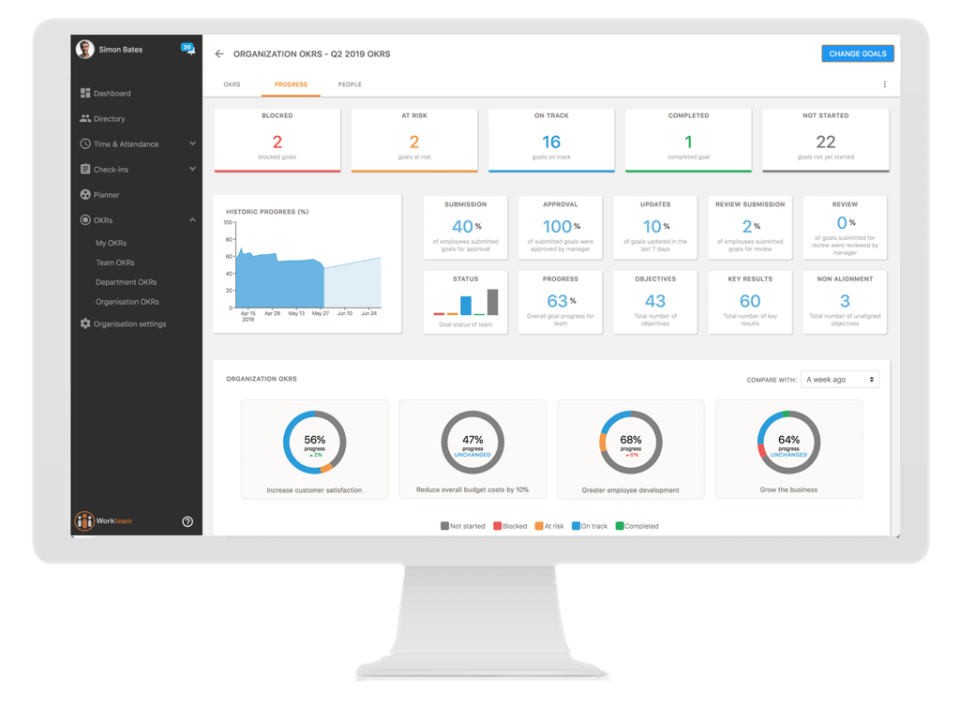In 2020, technology is enhancing almost every growing business on the planet. This is making business and life far more competitive. Organizations that need to stay ahead, however, must set, and achieve clear targets to progress. Average companies might use Key Performance Indicators (KPIs) but those that want to be winners use Objective and Key Results (OKRs).
So what is an OKR and why should you care?
The acronym seems like a silly business term you should just brush aside. It could just be another fancy buzz-phrase between IT guys or middle managers. But OKR is so much more than three letters. It is a tool-based approach to manage your business better.
OKR was first coined by Andy Grove, CEO at Intel, some 50 years ago. He wanted the chipmaker, to be the largest and most competitive maker of semiconductors on Earth. Not only did they make good products at the time but the use of an OKR strategy enabled them to work quicker than their opponents could.
The need for OKRs
OKRs become even more important as companies got larger and faced challenges along the way. Some of these challenges include organisational performance seeming lower, communication across the organisation becoming harder, and work becoming less focused and poorly aligned to the organisation’s strategy – seem familiar?
Here is how a good OKR strategy will help you address the above-mentioned pains:

- OKR provides a collaborative goal-setting tool, used by managers and teams to set challenging, ambitious goals with attached results which are measurable.
- The tool can be used to assist with the tracking of progress and ensuring that each member’s work is aligned to a set goal.
- It encourages team members to ask questions about what the details of a goal are and how that goal can be achieved.
Companies of all sizes should therefore embrace the use of OKRs. When used and monitored correctly, these can make your business far more efficient.
So how does one manage OKRs?
Once you have put OKRs in place at your company, you need to use something (software) that is intuitive and user friendly to manage them. Conversations, Feedback, and Recognition (CFR) software such as Workteam would be a perfect tool to manage them.
CFRs give the sometimes ‘black or white’ OKRs a more descriptive picture and let you go beyond the question, “Was the goal achieved or not?”
The software stores and displays this ‘descriptive picture’ in a user-friendly and interesting dashboard. It has ready-made graphs to help you present data quickly in reports.
Workteam helps to manage OKRs and grants your company continuous peer feedback. This enables you to focus and engage your workforce, making it a comprehensive employee engagement solution.

The modular application has four sections:
o Team Conversations
o Organisational Alignment
o Employee Management
o Team Collaboration.
The fully GDPR-compliant software is based on a ‘per user’ annual license module. This means you can choose how many licenses depending on the roles of the people with decision-making powers in the organization. Or you can go fully transparent and have all staff use it.
You can even switch licenses when someone leaves without losing sight of OKRs. It naturally comes with a free trial to help you see how you can integrate it with other operational tools and software in your organization.
Hopefully, you now understand the importance of the tool and software. Managing your OKRs well will enable your employees to become more accountable and goals having more of an impact on the bigger picture. It will also ensure that progress is measured in more meaningful ways and your employees will achieve more.





